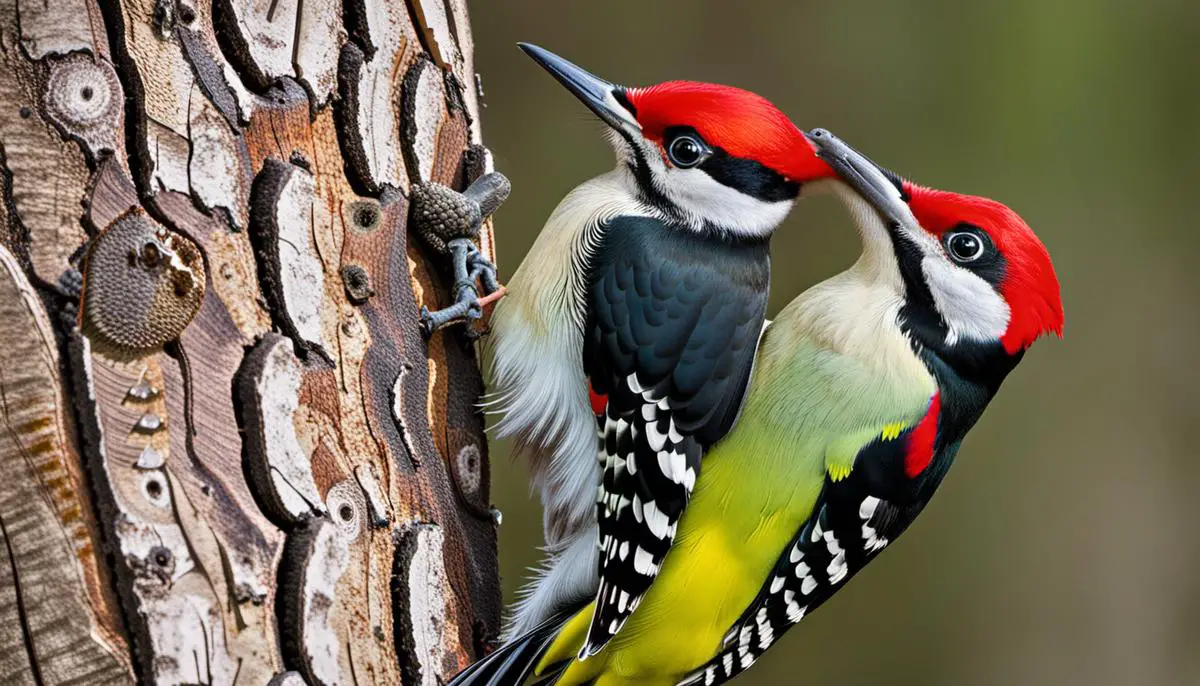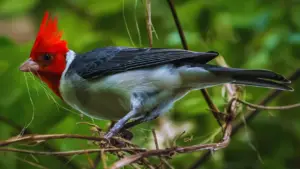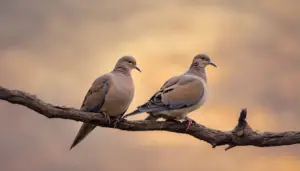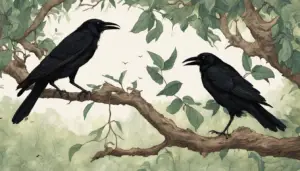Michigan’s diverse landscape, with its sprawling forests, serene lakes, and lush farmlands, is a welcoming home for a variety of bird species, of which woodpeckers hold a unique place. An emblem of resilience and industriousness, a variety of woodpecker species resonate with their signature percussive pecking throughout the vast Great Lake State. As you delve into the fascinating world of these winged carpenters, this discussion offers a glimpse into their distinctive features, their captivating behaviors, and their varying habitats within Michigan’s borders. Equally important is understanding the urgent conservation efforts being undertaken to preserve these iconic creatures and the delicate balance they maintain within our environment.
The Species of Woodpeckers in Michigan
Downy Woodpecker
The Downy Woodpecker is the most common and smallest woodpecker species found in Michigan. Measuring approximately 6 to 7 inches in length, this species is adorned with a checkered black and white back and wings. Its head, neck, and underparts are pure white. Males have a distinctive red spot on the back of their heads. This bird is a year-round resident and can often be seen in residential areas with mature trees or forests located nearby.
Hairy Woodpecker
Slightly larger than the Downy Woodpecker, the Hairy Woodpecker, measuring 9 to 10 inches long, is also common in Michigan. Its plumage is almost identical to the Downy Woodpecker with a black and white checkered back and wings, and a white head and underparts. Male Hairy Woodpeckers also have a red spot on their heads. The main distinguishing feature between these two species is the Hairy Woodpecker’s longer beak.
Red-bellied Woodpecker
The Red-bellied Woodpecker is a relatively large species measuring about 9 to 10 inches in size. This bird has a black and white barred back and pale grey front. Despite its name, its belly is hardly red. The most prominent feature is the red line that runs from its bill to its nape, a feature more pronounced in males than in females. They are widely distributed across Michigan and have adapted well to suburban and urban environments.
Northern Flicker
The Northern Flicker is unique among Michigan woodpeckers. Standing at 12 inches, this sizable woodpecker is often seen hopping on the ground looking for ants and beetles. The bird is brownish with black spots, bars and crescents, and a black ‘v’ on its chest. It also boasts a white rump patch that’s visible when the bird is in flight. Male Flickers have a moustache-like black or red line on their face, which females lack.
Red-headed Woodpecker
The Red-headed Woodpecker is a medium-sized bird, about 9 inches long. Its most striking characteristic is the entirely red head, neck, and throat, contrasting with a half black, half white body. This woodpeckers’ populations have substantially declined over the years in Michigan, primarily due to habitat loss, making them a rare sight in the state.
Pileated Woodpecker
Pileated Woodpeckers are the largest and one of the most striking species found in Michigan. Often mistaken for the now extinct Ivory-billed Woodpecker, the Pileated species stands a whopping 15 to 19 inches tall with a 26 to 30 inch wingspan. They have a primarily black body, a long neck, and a bright red crest at the top of their heads, which is present in both males and females. However, only males have a red stripe on their cheek. This species dwells in large, mature forests across the state.
Yellow-bellied Sapsucker
Yellow-bellied Sapsuckers are medium-sized birds standing about 7-9 inches tall. They are noted for their black wings and head, with distinct white wing patches, and a yellowish hue across their bellies. Males have red foreheads and throats, whereas females only have a red forehead. This woodpecker species is migratory, spending summers in the upper northern areas of Michigan and winters in the southern states.
Michigan is host to a variety of unique woodpeckers, each playing a vital role within their ecosystem. Their diverse responsibilities encompass the decomposition of dead trees, management of pest populations, and even the distribution and propagation of fungi and plants as a result of their persistent pecking behavior.
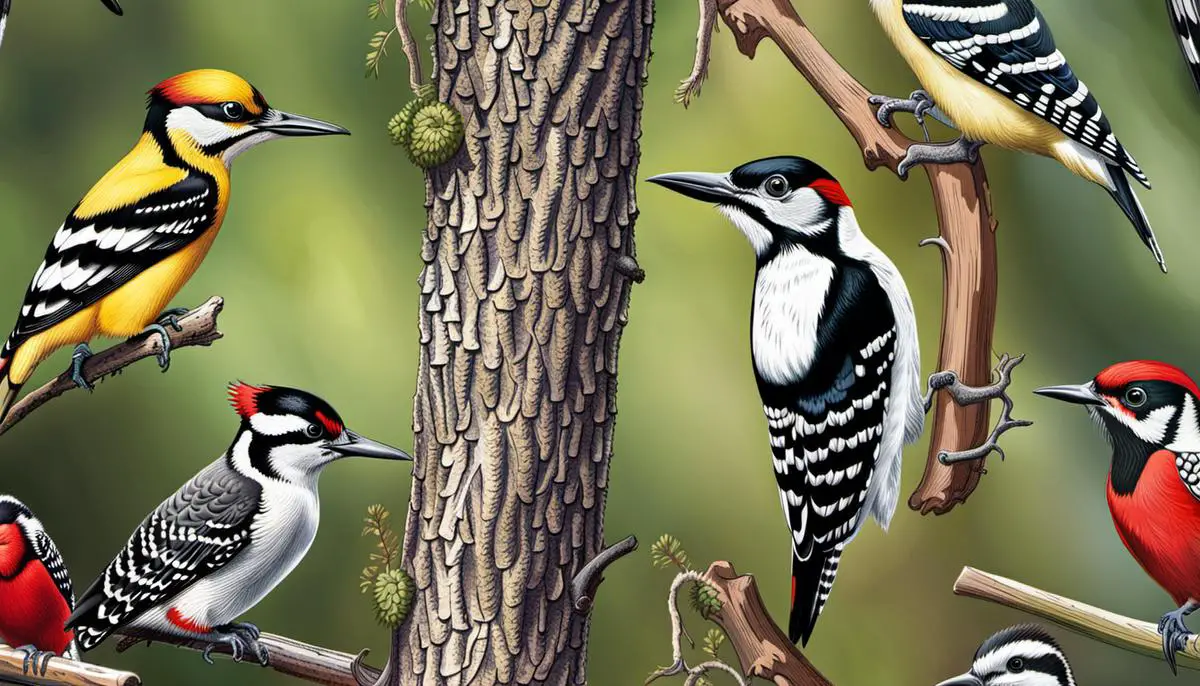
Habitats and Behaviors of Michigan Woodpeckers
The Diverse Habitats of Woodpeckers in Michigan
Each species of Michigan woodpeckers displays a unique preference for its habitat. Species such as the Downy Woodpecker, Hairy Woodpecker, and Northern Flicker have adapted to thrive broadly across Michigan, making their homes in a variety of environments including deciduous, mixed, and coniferous forests, or even in residential areas and parks. Red-bellied Woodpeckers and Red-headed Woodpeckers, prefer the seclusion of forests and woodlands adjacent to open plains, wetlands, or bodies of water. In contrast, the Pileated Woodpeckers typically reside only within mature hardwood or mixed forests.
Michigan Woodpecker Behavior
Michigan’s rich native woodland environment is home to various woodpeckers, nurtured by its diversity. Predominantly, these woodpeckers feed on small invertebrates like insects and spiders, extracted from dead or dying wood, a behavior that showcases their natural ability for adaptability. In some instances, their palette may also extend to consuming tree sap, nuts, seeds, and fruit. An exquisite example of this adaptability is the Yellow-bellied Sapsucker, known for creating sap wells. These are essentially holes aggressively drilled into trees, unleashing a sap flow, a food source that also draws insects in, providing a dual food reward.
Woodpecker’s nesting habits vary widely, depending on the species, but all woodpeckers are known for excavating nesting cavities in tree stumps, dead or decaying trees, or within the dead sections of living trees. For instance, the Pileated Woodpecker shows a distinct preference for nesting in large, mature trees, while the Northern Flicker isn’t beyond utilizing a man-made structure if it’s deemed suitable.
Woodpeckers have a unique with their ‘songs’ or sounds, serving as a channel for communication. This includes the characteristic woodpecker drumming sound, created when they rapidly strike their bill against a tree – a signal typically performed by males to mark territory. The frequency and intensity of this drumming can vary between species. Vocalizations also play a vital role, with sounds like the sharp, distinct call of the Red-bellied Woodpecker or the resonating, trumpet-like call of the Pileated Woodpecker echoing through the woodlands, communicating territory claims, seeking out mates, or warning off potential threats.

Conservation Efforts for Michigan Woodpeckers
The Conservation of Michigan Woodpeckers
With its abundant forest lands, Michigan serves as both a year-round and migratory sanctuary for seven species of woodpeckers, namely the Downy Woodpecker, Hairy Woodpecker, Red-bellied Woodpecker, Northern Flicker, Pileated Woodpecker, Yellow-bellied Sapsucker, and the Red-headed Woodpecker. For the majority of these species, the news is encouraging: They are not categorised under threat and enjoy a stable population. However, there’s a note of concern for the Red-headed Woodpecker. This particular species has been observing a concerning drop in their numbers, prompting the Michigan Department of Natural Resources to now classify them as a ‘Species of Special Concern’.
Threats to Michigan Woodpeckers
Like many wildlife species, woodpeckers in Michigan face several threats that include habitat loss, climate change effects, and human disturbance. Habitat loss is often due to deforestation, urban sprawl, and agricultural expansion. Woodpeckers rely heavily on large, dead trees for nesting and feeding, and when these trees are removed, the birds lose critical habitat. Climate change also plays a role as shifts in temperature could potentially affect the availability of food sources.
Efforts to Conserve Michigan Woodpeckers
The Michigan Department of Natural Resources is one of the government organizations working towards conserving these woodpeckers. Their efforts include monitoring the population and habitat of these species, and they also undertake initiatives to provide them with suitable habitats. Their conservation plan, which outlines the management and research needed for at-risk species, identifies the Red-headed Woodpecker as needing concerted conservation efforts.
In addition to the government, several non-governmental organizations (NGOs) are also playing significant roles in the conservation of Michigan’s woodpeckers. The Michigan Audubon, a bird conservation NGO, conducts several programs and research projects related to bird conservation, including for woodpeckers. They believe that conserving birds and their habitats benefits the state’s ecosystems and overall quality of life.
Public Participation in Conservation Efforts
Citizens can also contribute to these conservation efforts. For instance, they can participate in citizen science projects, such as the Michigan Breeding Bird Atlas II, which collects data on breeding birds in the state. People can also avoid cutting down dead trees in their property unless they pose a safety risk, as these trees provide essential habitat for woodpeckers.
Moreover, citizens can help by supporting organizations doing the invaluable work of conserving these birds, either through donations or volunteer work. Public education is another vital aspect of conservation, and the more people know about these birds and the challenges they face, the better they can protect them.
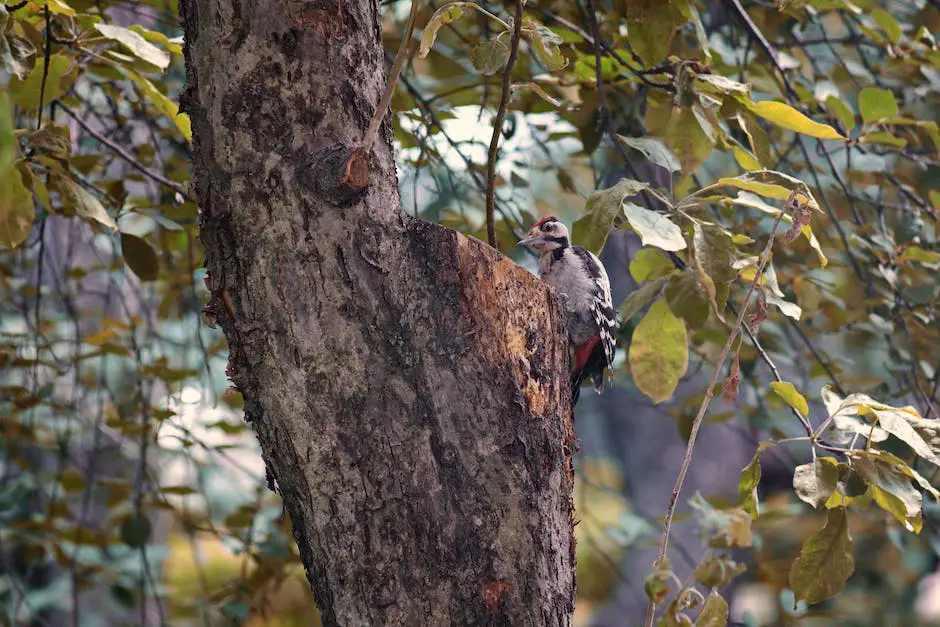
Our journey into the captivating world of Michigan’s woodpeckers provides a profound understanding and respect for these marvelous birds. The unique interplay of their distinctive features, habitats, and behaviors contributes to the biodiversity of the state and plays an essential role in maintaining the health of its forests. Yet, the delicate balance they strike within their environment is under siege from unprecedented challenges, such as climate change and habitat loss. Ensuring their preservation has never been more critical as it is today, and it’s through collective efforts that the melodious drumming of woodpeckers will continue to resonate across Michigan’s pristine landscape for generations to come.

